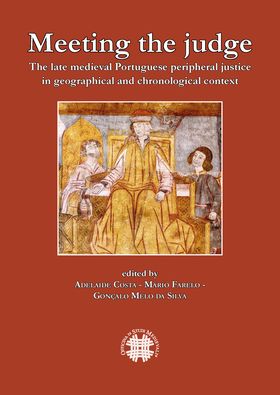ABOUT THE BOOK
This book is the final result of a project entitled Meet the judge. Justice and communities in a transitional period (Portugal, 1481-1580). It aimed to answer one question: analyze how the sporadic nomination of royal judges operating with local governments in the Middle Ages evolved into systematic and permanent institutions of erudite officials in the main Portuguese cities and towns of the Modern Age? The presented texts go beyond this, by contributing to better understand the process of expansion of the Portuguese Crown’s peripheral judicial apparatus (in number and complexity), which entailed an irreversible loss of autonomy for the communities. The book has ten chapters providing: (I) state of the art and problematization on this subject; (II) an organogram of central and local judicial instances; (III) the Crown’s use of peripheral magistrates; (IV) the intense legislative activity involved in defining the competences of royal judicial agents, which prevailed from the 14th to the 16th centuries. Although concentrated mainly in Portugal, there are four texts that focus on other territories. Two texts about Castilian judicial norms and agents in the Late Middle Ages have been included, enabling a comparison to be made of the institutional experiences of the two neighboring kingdoms. Two other contributions focus on vestiges of medieval local justice organization and royal control in North Africa and in the Orient. The authors resorted to different types of sources and methodologies, from case study analysis to the observation of groups of officers using a prosopographic method. The book provides in the end a glossary of the offices, institutions and rules of central, peripheral and local justice in medieval Portugal and Castile, as well as seven maps on the topics studied.
More information can be found here.


No comments:
Post a Comment